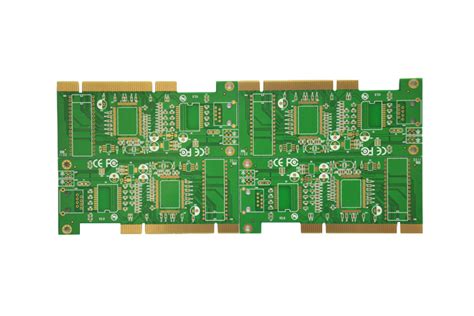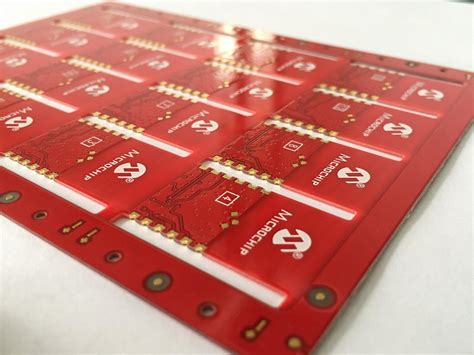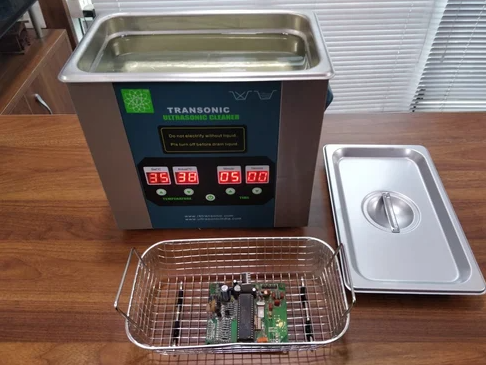Analysis and suppression methods of ground interference in PCB wiring
1.Definition of ground
What is ground?
The definition of ground that everyone learns in textbooks is: ground is an equipotential body that serves as the potential reference point of the circuit. This definition does not conform to the actual situation.
The potential on the actual ground is not constant. If you use an instrument to measure the potential between the points on the ground, you will find that the potentials of the points on the ground may differ greatly. It is these potential differences that cause the abnormal operation of the circuit.
The definition that the circuit is an equipotential body is only people’s expectation of the ground potential. HENRY gave a more practical definition of the ground.
He defined the ground as: a low-impedance path for the signal to flow back to the source. This definition highlights the flow of current in the ground. According to this definition, it is easy to understand the cause of the potential difference in the ground. Because the impedance of the ground is never zero, when a current passes through a finite impedance, a voltage drop will be generated. Therefore, we should imagine the potential on the ground as waves in the sea, rising and falling.
2.Impedance of ground wire
When it comes to the potential difference between points on the ground wire caused by the impedance of the ground wire, which can cause the circuit to malfunction,
many people find it incredible: when we use an ohmmeter to measure the resistance of the ground wire, the resistance of the ground wire is often in the milliohm level.
How can such a large voltage drop be generated when the current flows through such a small resistance, causing the circuit to work abnormally?
To clarify this issue, we must first distinguish between the two different concepts of resistance and impedance of the wire. Resistance refers to the impedance of the wire to the current under the DC state, while impedance refers to the impedance of the wire to the current under the AC state. This impedance is mainly caused by the inductance of the wire. Any wire has inductance.
When the frequency is high, the impedance of the wire is much greater than the DC resistance.
The data given in Table 1 illustrates this problem. In actual circuits, the signals that cause electromagnetic interference are often pulse signals. Pulse signals contain rich high-frequency components, so they will generate a large voltage on the ground wire. For digital circuits, the operating frequency of the circuit is very high, so the impact of ground impedance on digital circuits is very considerable.
Table 1 Impedance of wire (Ω):
Frequency
Hz D = 0.65
10cm 1m D = 0.27
10cm 1m D = 0.065
10cm 1m D = 0.04
10cm 1m 10 51.4m 517m 327m 3.28m 5.29m 52.9m 13.3m 133m 1k 429m 7.14m 632m 8.91m 5.34m 53.9m 14m 144m 100k 42.6m 712m 54m 828m 71.6m 1.0 90.3m 1.07 1M 426m 7.12 540m 8.28 714m 10 783m 10.6 5M 2.13 35.5 2.7 41.3 3.57 50 3.86 53 10M 4.26 71.2 5.4 82.8 7.14 100 7.7 106 50M 21.3 356 27 414 35.7 500 38.5 530 100M 42.6 54 71.4 77 150M 63.9 81 107 115
If the impedance at 10Hz is approximately regarded as the DC resistance, it can be seen that when the frequency reaches 10MHz, for a 1-meter-long wire, its impedance is 1000 to 100,000 times the DC resistance. Therefore, for radio frequency current, when the current flows through the ground wire, the voltage drop is very large. It can also be seen from the table that increasing the diameter of the wire is very effective in reducing DC resistance, but it has a limited effect on reducing AC impedance. However, in electromagnetic compatibility, people are most concerned about AC impedance. In order to reduce AC impedance, an effective way is to connect multiple wires in parallel. When two wires are connected in parallel, their total inductance L is:
L = (L1 + M) / 2
Wherein, L1 is the inductance of a single wire, and M is the mutual inductance between the two wires. It can be seen from the formula that when the two wires are far apart, the mutual inductance between them is very small, and the total inductance is equivalent to half of the inductance of a single wire. Therefore, we can reduce the ground impedance by using multiple ground wires. But it should be noted that the distance between multiple wires cannot be too close.
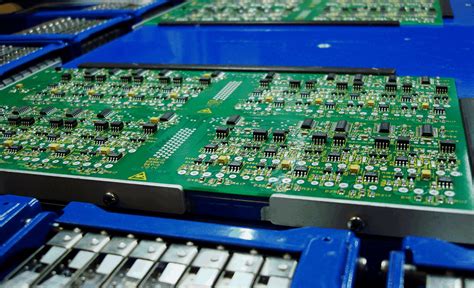
3.Ground interference mechanism
3.1 Ground loop interference
Due to the existence of ground impedance, when current flows through the ground wire, a voltage will be generated on the ground wire. When the current is large, this voltage can be very large. For example, when a high-power appliance is started nearby, a strong current will flow through the ground wire. This current will generate current on the connecting cable of the two devices. Due to the imbalance of the circuit, the current on each wire is different, so a differential mode voltage will be generated, which will affect the circuit. Since this interference is generated by the loop current formed by the cable and the ground wire, it is called ground loop interference. The current in the ground loop can also be induced by the external electromagnetic field.
3.2 Common impedance interference
When two circuits share a ground wire, due to the impedance of the ground wire, the ground potential of one circuit will be modulated by the working current of the other circuit. In this way, the signal in one circuit will be coupled into another circuit, and this coupling is called common impedance coupling.
In digital circuits, due to the high frequency of the signal, the ground wire often presents a large impedance. At this time, if there are different circuits sharing a ground wire, the problem of common impedance coupling may occur. The example in Figure 3 illustrates an interference phenomenon. Figure 3 is a simple circuit composed of four gate circuits. Assume that the output level of gate 1 changes from high to low. At this time, the parasitic capacitance in the circuit (sometimes there is a filter capacitor at the input end of gate 2) will discharge to the ground through gate 1. Due to the impedance of the ground, the discharge current will generate a spike voltage on the ground. If the output of gate 3 is low at this time, this spike voltage will be transmitted to the output end of gate 3 and the input end of gate 4. If the amplitude of this spike voltage exceeds the noise threshold of gate 4, it will cause the malfunction of gate 4.
4.Ground interference countermeasures
4.1 Ground loop countermeasures From the mechanism of ground loop interference, it can be known that as long as the current in the ground loop is reduced, the ground loop interference can be reduced. If the current in the ground loop can be completely eliminated, the problem of ground loop interference can be completely solved. Therefore, we propose the following solutions to solve ground loop interference.
A. Float the device at one end If the circuit at one end is floated,
the ground loop is cut off, so the ground loop current can be eliminated. But there are two problems to pay attention to. One is that for safety reasons, the circuit is often not allowed to float. At this time, you can consider grounding the device through an inductor. In this way, the ground impedance of the equipment is very small for 50Hz AC current, while for higher frequency interference signals, the ground impedance of the equipment is large, which reduces the ground loop current. However, this can only reduce the ground loop interference of high-frequency interference. Another problem is that although the equipment is floating, there is still parasitic capacitance between the equipment and the ground. This capacitance will provide lower impedance at higher frequencies, so it cannot effectively reduce the high-frequency ground loop current.
B. Use transformers to connect between devices. Using magnetic circuits to connect two devices can cut off the ground loop current.
However, it should be noted that the parasitic capacitance between the primary and secondary of the transformer can still provide a path for the higher frequency ground loop current, so the transformer isolation method has a poor suppression effect on the high-frequency ground loop current. One way to improve the high-frequency isolation effect of the transformer is to set a shielding layer between the primary and secondary of the transformer. However, it must be noted that the grounding end of the shielding layer of the isolation transformer must be at the receiving circuit end. Otherwise, not only will the high-frequency isolation effect not be improved, but the high-frequency coupling may also be more serious. Therefore, the transformer should be installed on the side of the signal receiving device. A well-shielded transformer can provide effective isolation at frequencies below 1MHz.
C. Use optical isolator Another way to cut off the ground loop is to use light to transmit signals.
This can be said to be the most ideal way to solve the ground loop interference problem. There are two ways to connect with light, one is optical coupler device, and the other is optical fiber connection. The parasitic capacitance of the optical coupler is generally 2pf, which can provide good isolation at very high frequencies. Optical fiber has almost no parasitic capacitance, but it is not as good as optical coupler device in terms of installation, maintenance, cost, etc.
D. Use common mode choke Using common mode choke on the connecting cable is equivalent to increasing the impedance of the ground loop,
so that under a certain ground line voltage, the ground loop current will decrease. But pay attention to controlling the parasitic capacitance of the common mode choke, otherwise the isolation effect of high-frequency interference will be very poor. The more turns of the common mode choke, the greater the parasitic capacitance, and the worse the high-frequency isolation effect.
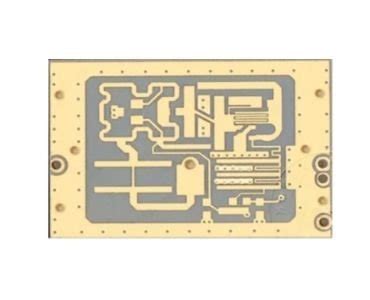
4.2 Eliminate common impedance coupling
There are two ways to eliminate common impedance coupling. One is to reduce the impedance of the common ground part, so that the voltage on the common ground line will also decrease, thereby controlling the common impedance coupling.
Another method is to avoid the sharing of ground wires by circuits that are prone to mutual interference through appropriate grounding methods. Generally, it is necessary to avoid the sharing of ground wires by strong and weak circuits, and by digital and analog circuits.
As mentioned above, the core issue of reducing ground wire impedance is to reduce the inductance of the ground wire. This includes using flat conductors as ground wires and using multiple parallel conductors that are far apart as ground wires. For printed circuit boards, laying a ground wire grid on a double-layer board can effectively reduce the ground wire impedance.
Although using a single layer as a ground wire in a multi-layer board has a very small impedance, it will increase the cost of the circuit board. The grounding method to avoid common impedance through appropriate grounding methods is parallel single-point grounding, as shown in Figure 4. The disadvantage of parallel grounding is that there are too many grounding wires.
Therefore, in practice, it is not necessary for all circuits to be grounded in parallel at a single point. For circuits with less mutual interference, series single-point grounding can be used. For example, circuits can be classified according to strong signals, weak signals, analog signals, digital signals, etc., and then series single-point grounding is used within the same circuit, and parallel single-point grounding is used for circuits of different types.
5.Summary
The main reason for electromagnetic interference caused by ground wire is that there is impedance in the ground wire. When current flows through the ground wire, voltage will be generated on the ground wire, which is ground wire noise. Driven by this voltage, ground wire loop current will be generated, forming ground loop interference. When two circuits share a ground wire, common impedance coupling will be formed. The methods to solve ground loop interference include cutting off the ground loop, increasing the impedance of the ground loop, using a balanced circuit, etc. The method to solve common impedance coupling is to reduce the impedance of the common ground wire part, or use parallel single-point grounding to completely eliminate the common impedance.

